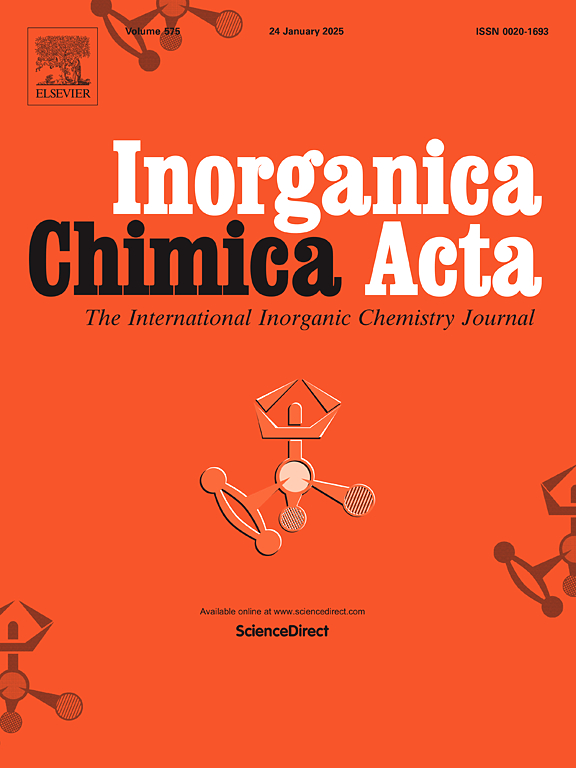From cobalt(II), nickel(II) and copper(II) (2-thio)barbiturates to their imidazole-based complex salts: Synthesis, structure, physicochemical and biological properties
IF 2.7
3区 化学
Q2 CHEMISTRY, INORGANIC & NUCLEAR
引用次数: 0
Abstract
A series of metal(II) complexes based on 1,3-diazinane-2,4,6-trione (H2BA, C4H4N2O3) or 2-sulfanylidene-1,3-diazinane-4,6-dione (H2TBA, C4H4N2O2S) with the formula [M(H2O)4(HBA)2] (1, 2), [Cu(H2O)3(HBA)2] (3) and [M(H2O)2(HTBA)2] (4, 5) (M = Co, Ni) were synthesized. These compounds were then used to obtain novel complex salts [M(H2O)m(Im)n](H(T)BA)2 · pH2O (m = 0 or 2, n = 4 or 6, p = 0, 2 or 4) and [Cu(H2O)(Im)4](HBA)2 · 3H2O, where Im is 1H-imidazole (C3H4N2). The isolated products were characterized using elemental analysis, FT-IR spectroscopy, XRD and TG–DSC. Complexes 1–5 were slightly soluble in water (–logKsp ranged from 5.10 for 5 to 7.45 for 4) and started to undergo oxidative degradation at 220–300 °C. The presence of [MH(T)BA]+ species in acidic solutions was revealed, and their β11 values, which varied within a range of ∼2–3 log units, were determined using the solubility method and pH-metry. Metal(II) imidazole complexes, with some exceptions, were more soluble than 1–5, but their decomposition started to occur at 130–175 and 325–450 °C for the Im and H(T)BAˉ moieties, respectively. The preservation of their inner coordination sphere after dissolution in water was confirmed by UV–Vis spectroscopy. The spectra had typical λmax values for metal(II)–Im systems: ∼500 nm (Co2+), ∼632 nm (Ni2+) and ∼631 nm (Cu2+). In the crystal structures of salts, 3D supramolecular frameworks were assembled by water molecules, complex cations and corresponding anions through hydrogen bonding. During biological testing, only nickel(II) imidazole complexes demonstrated enhanced bacteriostatic activity against E. coli. The cytotoxicity of copper-based compounds was significantly higher for SKOV3 cancer cells than against HepG2 cells.

求助全文
约1分钟内获得全文
求助全文
来源期刊

Inorganica Chimica Acta
化学-无机化学与核化学
CiteScore
6.00
自引率
3.60%
发文量
440
审稿时长
35 days
期刊介绍:
Inorganica Chimica Acta is an established international forum for all aspects of advanced Inorganic Chemistry. Original papers of high scientific level and interest are published in the form of Articles and Reviews.
Topics covered include:
• chemistry of the main group elements and the d- and f-block metals, including the synthesis, characterization and reactivity of coordination, organometallic, biomimetic, supramolecular coordination compounds, including associated computational studies;
• synthesis, physico-chemical properties, applications of molecule-based nano-scaled clusters and nanomaterials designed using the principles of coordination chemistry, as well as coordination polymers (CPs), metal-organic frameworks (MOFs), metal-organic polyhedra (MPOs);
• reaction mechanisms and physico-chemical investigations computational studies of metalloenzymes and their models;
• applications of inorganic compounds, metallodrugs and molecule-based materials.
Papers composed primarily of structural reports will typically not be considered for publication.
 求助内容:
求助内容: 应助结果提醒方式:
应助结果提醒方式:


